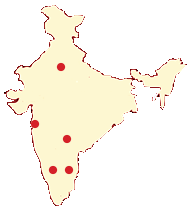Overview
Coronary angiography is a specialised x-ray test to find out detailed information about your coronary (heart) arteries. It is mainly used if you have angina to assess the extent and severity of the disease. It involves a procedure called cardiac catheterisation.
What is coronary angiography ?
Coronary angiography is a special x-ray of the coronary arteries. The coronary arteries do not show up on a plain x-ray. With coronary angiography, dye is injected down the coronary arteries. The arteries and their smaller branches then show up clearly on an x-ray "like a road map". Dye is injected into the coronary arteries by using a catheter. (A catheter is a thin, flexible, hollow tube.) How this is done is descibed below.
 Therefore, coronary angiography can show the exact site and severity of any narrowing of the coronary arteries. This helps the doctor to decide on what treatment you may need. For example, if the narrowing is mild and does not need surgery. Or, if the narrowing is severe and you should have a coronary artery bypass graft or coronary angioplasty.
Therefore, coronary angiography can show the exact site and severity of any narrowing of the coronary arteries. This helps the doctor to decide on what treatment you may need. For example, if the narrowing is mild and does not need surgery. Or, if the narrowing is severe and you should have a coronary artery bypass graft or coronary angioplasty.
How is coronary angiography done ?
You lie on a couch in a catheterisation room. An x-ray machine is mounted above the couch. A catheter is inserted through a wide needle or small cut in the skin into a blood vessel in the groin or arm. Local anaesthetic is injected into the skin above the blood vessel. Therefore, it should not hurt when the catheter is passed into the blood vessel. The doctor gently pushes the catheter up the blood vessel towards the heart. Low dose x-rays are used to monitor the progress of the catheter tip which is gently manipulated into the correct position. You may be able to see the progress of the catheter on the x-ray monitor.
How do I prepare for a coronary angiography ?
You should get instructions from your local hospital about what you need to do.
 If you take warfarin (a 'blood thinning' drug), you will need to stop this for 2-3 days before the test. (This prevents excessive bleeding from the site of the catheter insertion.)
If you take warfarin (a 'blood thinning' drug), you will need to stop this for 2-3 days before the test. (This prevents excessive bleeding from the site of the catheter insertion.) If you take insulin or drugs for diabetes, the timing of when to take these on the day of the test may need to be clarified.
If you take insulin or drugs for diabetes, the timing of when to take these on the day of the test may need to be clarified. If you may be pregnant, you need to tell the doctor who will do the test.
If you may be pregnant, you need to tell the doctor who will do the test. You may be asked to stop eating and drinking for a few hours before the test.
You may be asked to stop eating and drinking for a few hours before the test. You may be asked to shave both groins before the test.
You may be asked to shave both groins before the test. You will have to sign a consent form at some point before the test to confirm that you understand the procedure, understand the possible complications (see below), and agree to the procedure being done.
You will have to sign a consent form at some point before the test to confirm that you understand the procedure, understand the possible complications (see below), and agree to the procedure being done.Understanding the arteries of the heart :-
The heart is mainly made of special muscle. The muscle pumps blood into arteries (blood vessels) which take the blood to every part of the body. Like any other muscle, the heart muscle needs a good blood supply. The coronary arteries take blood to the heart muscle. The coronary arteries are the first arteries to branch off the aorta. The aorta is the large artery that takes blood from the left ventricle of the heart to the body.
What is angina and what causes it ?
Angina is a pain that comes from the heart. The usual cause of angina is narrowing of one or more of your coronary arteries. This reduces the blood supply to a part or parts of your heart muscle. The blood supply may be enough when you are resting. However, your heart muscle needs more blood and oxygen when it works harder. For example, when you walk fast or climb stairs, your heart rate increases to deliver the extra blood. If the extra blood that your heart needs during exertion cannot get past the narrowed arteries, the heart 'complains' with pain.
Coronary Angiography, Coronary Angiogram India
The narrowing of the arteries is caused by atheroma. Atheroma is like fatty patches or 'plaques' that develop within the inside lining of arteries. (This is similar to water pipes that get 'furred up' with scale.) Plaques of atheroma may gradually form over a number of years in one or more places in the coronary arteries. In time, these can become bigger and cause enough narrowing of one or more of the arteries to cause symptoms. (The diagram shows three narrowed sections as an example. However, atheroma can develop in any section of the coronary arteries.)
How the Test is Performed ?
Coronary angiography is usually done along with cardiac catheterization. Before the test starts, you will be given a mild sedative to help you relax. An area of your body, usually the arm or groin, is cleaned and numbed with a local numbing medicine (anesthetic). The cardiologist passes a thin hollow tube, called a catheter, through an artery and carefully moves it up into the heart. X-ray images help the doctor position the catheter. Once the catheter is in place, dye (contrast material) is injected into the catheter. X-ray images are taken to see how the dye moves through the artery. The dye helps highlight any blockages in blood flow. The procedure may last 30 to 60 minutes.
How to Prepare for the Test ?
You should not eat or drink anything for 8 hours before the test starts. You may need to stay in the hospital the night before the test. Otherwise, you will check in to the hospital the morning of the test.
You will wear a hospital gown. You must sign a consent form before the test. Your health care provider will explain the procedure and its risks. Tell your doctor if you are allergic to seafood, if you have had a bad reaction to contrast material in the past, if you are taking Viagra, or if you might be pregnant. How the Test Will Feel You are awake during the test. You may feel some pressure at the site where the catheter is inserted.
Occasionally, a flushing sensation occurs after the dye is injected. After the test, the catheter is removed. You might feel a firm pressure at the insertion site, used to prevent bleeding. If the catheter is placed in your groin, you will usually be asked to lie flat on your back for a few hours after the test to avoid bleeding. This may cause some mild back discomfort.
Why the Test is Performed ?
Coronary angiography is done to find a blockage in the coronary arteries, which can lead to heart attack. It may be done if you have unstable angina, atypical chest pain, aortic stenosis, or unexplained heart failure.
Are there any risks or side-effects ?
 One problem is that a bruise may form under the skin where the catheter was inserted (usually the groin). This is not serious, but it may be sore for a few days.
One problem is that a bruise may form under the skin where the catheter was inserted (usually the groin). This is not serious, but it may be sore for a few days. The small wound where the catheter is inserted sometimes becomes infected. Tell your GP if the wound becomes red and tender. A short course of antibiotics will usually deal with this if it occurs.
The small wound where the catheter is inserted sometimes becomes infected. Tell your GP if the wound becomes red and tender. A short course of antibiotics will usually deal with this if it occurs. Some people get a short angina-type pain during angiography. This soon goes.
Some people get a short angina-type pain during angiography. This soon goes. The dye may give you a hot, flushing feeling when it is injected. Many people also describe a warm feeling in the groin when the dye is injected - as if they have "wet themselves". These feelings last just a few seconds (and the operator will tell you when they are about to inject the dye). Rarely, some people have an allergic reaction to the dye.
The dye may give you a hot, flushing feeling when it is injected. Many people also describe a warm feeling in the groin when the dye is injected - as if they have "wet themselves". These feelings last just a few seconds (and the operator will tell you when they are about to inject the dye). Rarely, some people have an allergic reaction to the dye. Serious complications are rare, but do sometimes occur. The risk is mainly in people who already have serious heart disease. Your doctor will only recommend coronary angiography if they feel the benefits outweigh the small risk. Potential serious complications are : -
Serious complications are rare, but do sometimes occur. The risk is mainly in people who already have serious heart disease. Your doctor will only recommend coronary angiography if they feel the benefits outweigh the small risk. Potential serious complications are : -o A heart attack occurring during the procedure.
o The catheter may damage a coronary artery. If this occurs, the artery may be repaired by emergency heart surgery.
o A stroke.
o Rarely, some people die during this procedure as a consequence of one of these serious complications.
For more information, medical assessment and medical quote
as email attachment to
Email : - info@wecareindia.com
Contact Center Tel. (+91) 9029304141 (10 am. To 8 pm. IST)
(Only for international patients seeking treatment in India)










